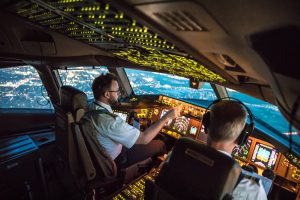 Modern aircraft are complicated. It takes years of training and hundreds of hours behind the stick to be comfortable taking a plane into the clouds. Although there are many tools and techniques pilots use to gain the expertise necessary to fly safely, gliders are still the best way to ensure safe landings when things go wrong.
Modern aircraft are complicated. It takes years of training and hundreds of hours behind the stick to be comfortable taking a plane into the clouds. Although there are many tools and techniques pilots use to gain the expertise necessary to fly safely, gliders are still the best way to ensure safe landings when things go wrong.
Automated Systems Make Flying Skills Less Critical
Automation and technology are great things. They make life easier in many different ways. This is especially true when it comes to flying an aircraft. The way most modern planes are designed, pilots have little need to fly in the traditional sense. Their hands rarely even touch the rudder.
It’s a perfect solution when technology behaves. But, computers freeze and electronics fail. On the ground, it’s no big deal. At thirty thousand feet, it can be catastrophic.
Glider Pilots Are Less Tool Dependent
Learning to fly a glider forces pilots to be less tool dependent. You cannot safely operate a motor-less aircraft without understanding the intricacies of lift-induced drag and trim airspeed. So, when a pilot accustomed to having a motor gets into a stall, they may lack the basic flight skills to land safely.
In addition to fundamental stick and rudder skills, glider pilots also learn better visual techniques. Because they regularly fly in close proximity to other aircraft, good lookout habits and effective scanning become second nature. Glider pilots also are forced to refine their ability to read meteorological conditions and landing sequences.
As with any skill, it is always best to have a firm grasp of the fundamentals before moving on to the more advanced concepts. Flying a glider is the best way to master the basics. Then, when a motor is added to the mix, a pilot will be ready for anything.

